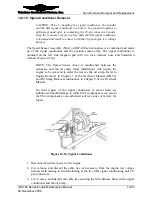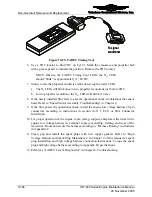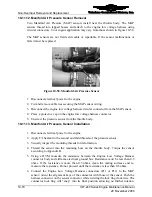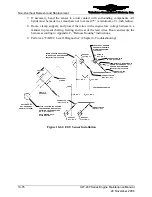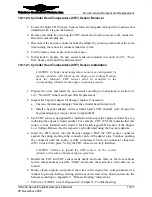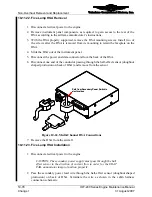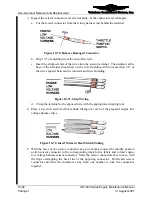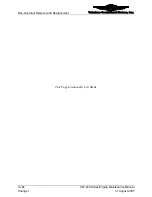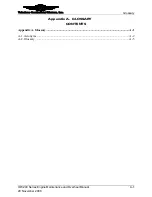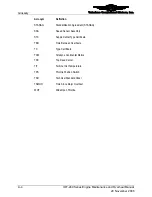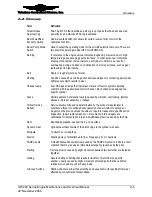
Teledyne Continental Motors, Inc.
TM
Non-Overhaul Removal and Replacement
IOF-240 Series Engine Maintenance Manual
10-77
29 November 2006
10-11.20. Cylinder Head Temperature (CHT) Sensor Removal
Procedure
1.
Locate the faulty CHT Sensor. Sensors leads are designated for specific locations and
identified with a tag on the harness.
2.
Remove the cable ties securing the CHT sensor lead to allow access to the connector.
Discard removed cable ties.
3.
Disconnect the bayonet connector from the adapter by pressing down and at the same
time turning the connector counter-clockwise ¼ turn.
4.
Cut the lead as close as practical to the sensor.
5.
Instructions to prepare the new sensor leads are included in section 10-10.3, “Non-
EGT Sensor and Lead Wire Replacement.”
10-11.21. Cylinder Head Temperature (CHT) Sensor Installation
CAUTION: Cylinder head temperature sensors are designated for
specific cylinders with labels on the Engine Low Voltage Harness
near the solenoid. CHT sensors must be matched to the
corresponding cylinder for the engine to operate properly.
Procedure
1.
Prepare the wires and install the new sensor according to instructions in section 10-
10.3, “Non-EGT Sensor and Lead Wire Replacement.”
2.
Inspect the bayonet adapter for damage; replace if necessary.
a.
Unscrew the damaged adapter from the cylinder head thermal well.
b.
Install a bayonet adapter in the cylinder head’s CHT thermal well. Torque the
bayonet adapter per torque values in Appendix B.
3.
Each CHT sensor is designated for installation into a specific engine cylinder by a tag
indicating the engine cylinder number. For example, CHT (CYL#2) indicates that this
sensor is to be installed on Cylinder 2. Install each tagged CHT sensor of the Engine
Low Voltage Harness into the respective cylinder head using the bayonet adapters.
4.
Insert the CHT sensor into the bayonet adapter. Push the CHT sensor connector
against the spring and align the connector slots with adapter pins. Continue pushing
the connector until the spring is fully compressed. Twist the connector clockwise
(CW) to lock it into place. Verify the CHT sensor is securely installed.
CAUTION: Failure to install the CHT sensors on the correct
cylinder will result in abnormal engine operation.
5.
Bundle the EGT and CHT sensor leads neatly and route them as far from exhaust
system components as possible. “Stalk” and secure the lead wires with cable ties as
needed.
6.
Route, clamp, support, and protect the wires in the engine low voltage harness in a
manner to prevent chafing, fretting, and wear of the lead wires. Route and secure the
harness according to Appendix C, “Harness Routing” instructions.
7.
Perform a “FADEC Level I Diagnostics” (Chapter 8, Troubleshooting).

